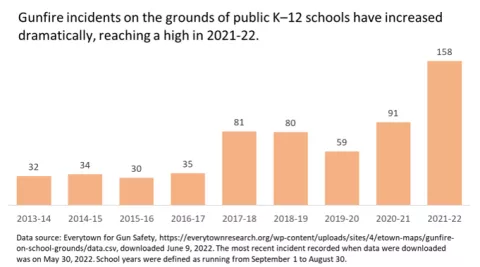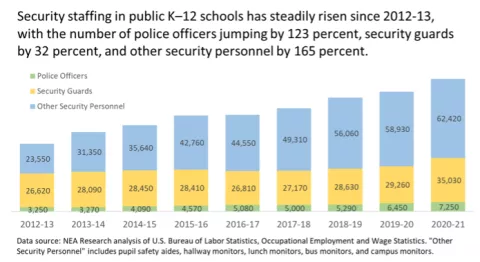Proposals to ‘harden’ public K–12 schools overlook clear evidence that these approaches fail to reduce gunfire incidents.
A comprehensive review of the research published between 2000 and 2018 concluded that “Hundreds of millions of dollars have been spent to harden schools.”
Nonetheless, it found, “None of the currently employed school firearm violence prevention methods have empirical evidence to show that they actually diminish firearm violence in schools.”
A look at current data reveals a hard truth: the number of gunfire incidents at public K–12 schools is much higher now than it was only a few years ago.
At the same time, school security staffing has steadily increased, providing further evidence that ‘hardening’ policies do not have the intended effect of keeping students and educators safe from gun violence.
Furthermore, schools that have had gunfire incidents are more likely to have had security staff: in the two school years with available school-level security staffing data, two-thirds of schools with incidents had security guards or sworn law enforcement officers compared to only one-third of K–12 schools overall.*


* Based on an analysis of the two school years, 2015-16 and 2017-18, with available Office of Civil Rights Data Collection school-level data on security staffing. In 2015-16, 33 percent of all public K–12 schools had guards or officers compared to 69 percent of schools with gunfire incidents. In 2017-18, the difference was 35 percent to 65 percent.
Downloads
Are you an affiliate?

